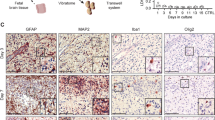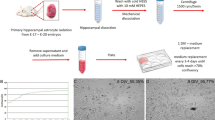Abstract
To determine whether herpes simplex virus type 1 (HSV-1) infection causes oxidative stress and lipid peroxidation in cultured neural cells, mouse P19 embryonal carcinoma cells were differentiated into cells with neural phenotypes (P19N cells) by retinoic acid and were then infected with HSV-1. Cellular levels of reactive oxygen species (ROS) and the release of lipid peroxidation by-products into the tissue culture medium were then measured by the generation of fluorescent markers hydroxyphenyl fluorescein and a stable chromophore produced by lipid peroxidation products, malondialdehyde (MDA) and hydroxyalkenals (4-HAEs; predominantly 4-hydroxy-2-nonenal [HNE]), respectively. HSV-1 infection increased ROS levels in neural cells as early as 1 h post infection (p.i.) and ROS levels remained elevated at 24 h p.i. This viral effect required viral entry and replication as heat- and ultraviolet light-inactivated HSV-1 were ineffective. HSV-1 infection also was associated with increased levels of MDA/HAE in the culture medium at 2 and 4 h p.i., but MDA/HAE levels were not different from those detected in mock infected control cultures at 1, 6, and 24 h p.i. HSV-1 replication in P19N cells was inhibited by the antioxidant compound ebselen and high concentrations of HNE added to the cultures, but was increased by low concentrations of HNE. These findings indicate that HSV-1 infection of neural cells causes oxidative stress that is required for efficient viral replication. Furthermore, these observations raise the possibility that soluble, bioactive lipid peroxidation by-products generated in infected neural cells may be important regulators of HSV-1 pathogenesis in the nervous system.
Similar content being viewed by others
References
Adamson DC, Kopnisky KL, Dawson TM, Dawson VL (1999). Mechanisms and structural determinants of HIV-1 coat protein, gp41-induced neurotoxicity. J Neurosci 19: 64–71.
Akaike T (2001). Role of free radicals in viral pathogenesis and mutation. Rev Med Virol 11: 87–101.
Andrews PW (1984). Retinoic acid induces neuronal differentiation of a cloned human embryonal carcinoma cell line in vitro. Develop Biol 103: 285–293.
Aurelian L (2005). HSV-induced apoptosis in herpes encephalitis. Curr Top Microbiol Immunol 289: 79–111.
Camandola S, Poli G, Mattson MP (2000). The lipid peroxidation product 4-hydroxy-2,3-nonenal increases AP-1-binding activity through caspase activation in neurons. J Neurochem 74: 159–168.
Ellermann-Eriksen S (2005). Macrophages and cytokines in the early defence against herpes simplex virus. Virol J 2: 59.
Fujii S, Akaike T, Maeda H (1999). Role of nitric oxide in the pathogenesis of herpes simplex virus encephalitis in rats. Virology 256: 203–212.
Fujioka N, Ohashi K, Ikeda M, Kurimoto M (2000). Autocrine interferon-beta stimulation augments nitric oxide production by mouse macrophage J774A.1 cells infected with herpes simplex virus type 1. Microbiol Immunol 44: 283–287.
Hardej D, Trombetta LD (2002). The effects of ebselen on cisplatin and diethylditiocarbamate (DDC) cytotoxicity in rat hippocampal astrocytes. Toxicol Letters 131: 215–216.
Johnson M, Valyi-Nagy T (1998). Expanding the clinico-pathologic spectrum of herpes simplex encephalitis. Hum Pathol 29: 207–210.
Kakishita H, Hattori Y (2001). Vascular smooth muscle cell activation and growth by 4-hydroxynonenal. Life Sci 69: 689–697.
Kalyankrishna S, Parmentier JH, Malik KU (2002). Arachidonic acid-derived oxidation products initiate apoptosis in vascular smooth muscle cells. Prostaglandins Other Lipid Mediat 70: 13–29.
Keller JN, Mattson MP (1998). Roles of lipid peroxidation in modulation of cellular signaling pathways, cell dysfunction, and death in the nervous system. Rev Neurosci 9: 105–116.
Koprowski H, Zheng YM, Heber-Katz E, Fraser N, Rorke L, Fu ZF, Hanlon C, Dietzschold B (1993). In vivo expression of inducible nitric oxide synthetase in experimentally induced neurologic diseases. Proc Natl Acad Sci U S A 90: 3024–3027.
Kruman I, Bruce-Keller I, Bredesden D, Waeg G, Mattson MP (1997). Evidence that 4-hydroxynonenal mediates oxidative stress-induced neuronal apoptosis. J Neurosci 17: 5089–5100.
Ji C, Amarnath V, Pietenpol JA, Marnett LJ (2001). 4-Hydroxynonenal induces apoptosis via caspase-3 activation and cytochrome c release. Chem Res Toxicol 14: 1090–1096.
Ji C, Rouzer CA, Marnett LJ, Pietenpol JA (1998). Induction of cell cycle arrest by the endogenous product of lipid peroxidation, malondialdehyde. Carcinogenesis 19: 1275–1283.
Jones-Villeneuve EMV, McBurney MW, Rogers KA, Kalnins VI (1982). Retinoic acid induces embryonal carcinoma cells to differentiate into neurons and glial cells. J Cell Biol 94: 253–262.
Liao SL, Raung SL, Chen CJ (2002). Japanese encephalitis virus stimulates superoxide dismutase activity in rat glial cultures. Neurosci Lett 324: 133–136.
Lin RN, Liao CL, Lin YL (2004). Replication-incompetent virions of Japanese encephalitis virus trigger neuronal death by oxidative stress in a culture system. J Gen Virol 85: 521–533.
Liochev SI, Fridovich I (1997). How does superoxide dismutase protect against tumor necrosis factor: a hypothesis informed by effect of superoxide on free iron. Free Radic Biol Med 23: 668–671.
Lopez-Guerrero JA, Alonso MA (1997). Nitric oxide production induced by herpes simplex virus type 1 does not alter the course of infection in human monocytic cells. J Genet Virol 78: 1977–1980.
Matthews N, Neale ML, Jackson SK, Stark JM (1987). Tumour cell killing by tumour necrosis factor: inhibition by anaerobic conditions, free radical scavengers and inhibitors of arachidonate metabolism. Immunology 62: 153–155.
Meyding-Lamade U, Hass J, Lamade W, Stingele K, Kehm R, Fath A, Heinrich K, Storch Hagenlocher B, Wildemann B (1998). Herpes simplex virus encephalitis: long-term comparative study of viral load and the expression of immunologic nitric-oxide synthetase in mouse brain tissue. Neurosci Lett 244: 9–12.
Milatovic D, Zhang YL, Olson SJ, Montine KS, Roberts LJ, Morrow JD, Dermody TS, Montine TJ, Valyi-Nagy T (2002). Herpes simplex virus type 1 encephalitis is associated with elevated levels of F-2-isoprostanes and F-4-neuroprostanes. J NeuroVirol 8: 295–305.
Montine TJ, Amarnath V, Martin ME, Strittmatter WJ, Graham DG (1996). E-4-hydroxy-2-nonenal is cytotoxic and cross-links cytoskeletal proteins in P19 neuroglial cultures. Am J Pathol 148: 89–93.
Nucci C, Palamara AT, Ciriolo MR, Nencioni L, Savini P, D’Agostini C, Rotilio G, Cerulli L, Garaci E (2000). Imbalance in corneal redox state during herpes simplex virus 1-induced keratitis in rabbits. Effectiveness of exogenous glutathione supply. Exp Eye Res 70: 215–220.
Palamara AT, Perno C, Ciriolo MR, Dini L, Balestra E, D’Agostini C, Di Francesco P, Favalli C, Rotilio G, Garaci E (1995). Evidence for antiviral activity of glutathione: in vitro inhibition of herpes simplex virus type 1 replication. Antiviral Res 27: 237–253.
Palu G, Biasolo MA, Sartor G, Masotti L, Papini E, Floreani M, Palatini P (1994). Effects of herpes simplex virus type-1 infection on plasma membrane and related function of HeLa S3 cells. J Gen Virol 75: 3337–3344.
Poli G, Schaur RJ (2000). 4-hydroxynonenal in the pathomechanisms of oxidative stress. IUBMB Life 50: 315–21.
Ray N, Enquist LW (2004). Transcriptional response of a common permissive cell type to infection by two diverse alphaherpesviruses. J Virol 78: 3489–3501.
Roizman B, Knipe DM (2001). Herpes simplex viruses and their replication. In: Field’s virology. Knipe DM, Howley PM (eds.), Philadelphia: Lippincott Raven Press, pp 2399–2460.
Sanchez-Alcazar JA, Schneider E, Martinez MA, Carmona P, Hernandez-Munoz I, Siles E, De La Torre P, Ruiz-Cabello J, Garcia I, Solis-Herruzo JA (2000). Tumor necrosis factor-alpha increases the steady-state reduction of cytochrome b of the mitochondrial respiratory chain in metabolically inhibited L929 cells. J Biol Chem 275: 13353–13361.
Savi LA, Leal PC, Vieira TO, Rosso R, Nunes RJ, Yunes RA, Creczynski-Pasa TB, Barardi CR, Simoes CM (2005). Evaluation of anti-herpetic and antioxidant activities, and cytotoxic and genotoxic effects of synthetic alkylesters of gallic acid. Arzneimittelforschung 55: 66–75.
Semlitsch T, Tillian HM, Zarkovic N, Borovic S, Purtscher M, Hohenwarter O, Schaur RJ (2002). Differential influence of the lipid peroxidation product 4-hydroxynonenal on the growth of human lymphatic leukaemia cells and human periopherial blood lymphocytes. Anticancer Res 22: 1689–1697.
Setsukinai K, Urano Y, Kakinuma K, Majima HJ, Nagano T (2003). Development of novel fluorescence probes that can reliably detect reactive oxygen species and distinguish specific species. J Biol Chem 278: 3170–3175.
Shaw MM, Gurr WK, Thackray AM, Watts PA, Littler E, Field HJ (2002). Temporal pattern of herpes simplex virus type 1 infection and cell death in the mouse brain stem: influence of guanosine nucleoside analogues. J Virol Methods 102: 93–102.
Shimeld C, Whiteland JL, Williams NA, Easty DL, Hill TJ (1997). Cytokine production in the nervous system of mice during acute and latent infection with herpes simplex virus type 1. J Gen Virol 78: 3317–3325.
Skoldenberg B (1996). Herpes simplex encephalitis. Scan J Infect Dis Suppl 100: 8–13.
Soh Y, Jeong KS, Lee IJ, Bae MA, Kim YC, Song BJ (2000). Select activation of the c-Jun N-terminal protein kinase pathway during 4-hydroxynonenal-induced apoptosis of P12 cells. Mol Pharmacol 58: 535–541.
Speir E (2000). Cytomegalovirus gene regulation by reactive oxygen species. Agents of atherosclerosis. Ann N Y Acad Sci 899: 363–374.
Tamagno E, Aragno M, Parola M, Parola S, Brignardello E, Boccuzzi G, Danni O (2000). NT2 neurons, a classical model for Alzheimer’s disease, are highly susceptible to oxidative stress. Neuroreport 11: 1865–1869.
Valyi-Nagy T, Dermody TS (2005). Role of oxidative damage in the pathogenesis of viral infections of the nervous system. Histol Histopathol 20: 957–967.
Valyi-Nagy T, Deshmane SL, Dillner AJ, Fraser NW (1991). Induction of cellular transcription factors in trigeminal ganglia of mice by corneal scarification, HSV-1 infection and explantation of trigeminal ganglia. J Virol 65: 4142–4152.
Valyi-Nagy T, Fareed MU, O’Keefe JS, Gesser RM, MacLean AR, Brown SM, Spivack JG, Fraser NW (1994). An HSV-1 strain 17+ gamma 34.5 deletion mutant 1716 is avirulent in SCID mice. J Gen Virol 75: 2059–2063.
Valyi-Nagy T, Olson SJ, Valyi-Nagy K, Montine TJ, Dermody TS. (2000). Herpes simplex virus type 1 latency in the murine nervous system is associated with oxidative damage to neurons. Virology 278: 309–321.
Viviani B, Corsini E, Binaglia M, Galli CL, Martinovich M (2001). Reactive oxygen species generated by glia are responsible for neuron death induced by human immunodeficiency virus-glycoprotein 120 in vitro. Neuroscience 107: 51–58.
Walsch KA, Megyesi JF, Wilson JX, Crukley J, Laubach VE, Hammond RR (2004). Antioxidant protection from HIV-1 gp120-induced neuroglial toxicity. J Neuroinflammation 27: 1–8.
Whitley RJ (2001). Herpes simplex viruses. In: Field’s virology. Knipe DM, Howley PM (eds). Philadelphia: Lippincott-Raven, pp 2461–2510.
Zarkovic N, Ilic Z, Jurin M, Schaur RJ, Puhl H, Esterbauer H (1993). Stimulation of Hela-Cell growth by physiological concentrations of 4-hydroxynonenal. Cell Biochem Function 11: 279–286.
Author information
Authors and Affiliations
Corresponding author
Additional information
Jerry H. Kavouras and Emese Prandovszky contributed equally to this work.
These studies were supportedby fellowship grants to E.P., M.K., and S.K.K. by the Rosztoczy Foundation.
Rights and permissions
About this article
Cite this article
Kavouras, J.H., Prandovszky, E., Valyi-Nagy, K. et al. Herpes simplex virus type 1 infection induces oxidative stress and the release of bioactive lipid peroxidation by-products in mouse P19N neural cell cultures. Journal of NeuroVirology 13, 416–425 (2007). https://doi.org/10.1080/13550280701460573
Received:
Revised:
Accepted:
Issue Date:
DOI: https://doi.org/10.1080/13550280701460573




